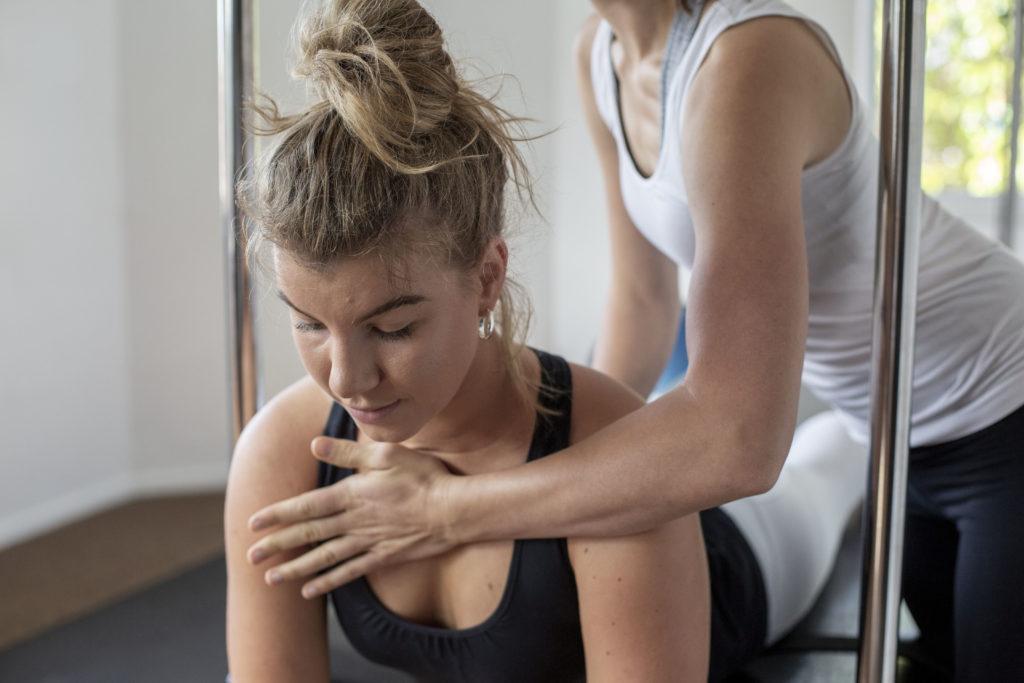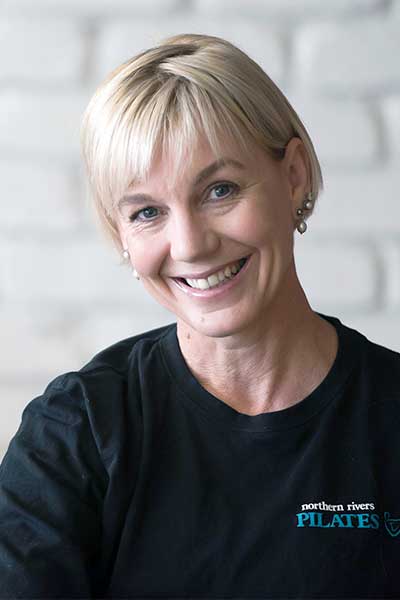Why your spine needs to move.
Think of the structure of your spine as if it has the mobility of a slinky (the toy), and the pliability of plasticine. Joseph Pilates is quoted as saying “you are only as young as your spine is flexible”.
Your spine is the centre of your core unit and just like the core of an apple if the structure becomes compromised so does the entire wellness of you.
The 7 cervical vertebrae in the neck have an amazing amount of movement availability but require good alignment to ensure there is a decent muscular balance front to back. The way we carry our head neck and shoulders determines how we distribute the load through the rest of the spine, similarly the way we carry through our pelvis can then determine a positive/negative domino effect upward to the skull.
Let us create some simple strategies to have optimum spinal alignment for positive movement experiences.
“There is no bad movement only movement badly done” Eve Gentry.
Some basic anatomy for you to refresh your knowledge. The neck has 7 vertebral bones, the thoracic has 12 vertebral bones; you also have 12 ribs, and you have 5 Lumbar vertebral bones. The vertebral bones start small at the neck and get larger as they get closer to your sacrum and pelvis. The neck is designed for a lot of movement, so that you can look behind you, right and left, up to the sky and down to the ground. The thoracic is designed to move a little less but when in good condition it is your main rotational point and the Lumbar (lower back) has the least movement available.
Let us begin from the top and work our way down. For every centimetre of forward carrying your head it is like you have added a 5 kg weight onto the shoulders and upper thoracic. When there is poor alignment in the neck, the front or back of the neck becomes stressed with overwork and this then creates issues. Examples of some of these glitches can be brachial plexus problems along with possible TMJ (temporomandibular joint) dysfunction around the jaw, headaches, radial nerve issues, tennis/golfer elbows, shoulders issues, frozen shoulders the list goes on. Basically, you need correct neck alignment to avoid unnecessary pain or discomfort.
How can you become more aware of neck alignment? Self-assessment is your best tool. Try standing side on in your natural posture and ask someone to take a photo (or even a mirror side on selfie). Analyse your natural stance. Your ears should fall in line with your shoulders and your neck should have a natural curve. Your neck is not a straight line. This constant postural self-reminder will help you tremendously. Habitual behaviour doesn’t change overnight so I would recommend the following Pilates movements; 1. nose nods on the chi ball; 2. lying with the roller under your neck and turn your head side to side; 3. simple neck movements throughout your day, turn your head to look over your right and then left shoulder, nod your head forward and bring your chin to your chest and then open your throat and look up to the ceiling, ear to shoulder and then the other.
Moving down your spine from the top 7 cervical (neck) vertebra to the 12 thoracic (middle) vertebra. This area deals with incorrect load distributed from our neck or lumbar/pelvis area so can often reflect a lot of our stresses. The thoracic supports your neck, ribs, soft tissues, blood vessels and nerves and is the stem structure to protect all of your vital organs. Your breathing is so important to improve your thoracic mobility as the diaphragm sits underneath our rib cage and if it is not having the opportunity to flex and stretch to its full potential it can create unnecessary rigidity for the middle of your back. Unlike your lower back the main kind of movement your thoracic is designed for is rotation, turning around like a Rubik cube puzzle. So your gift to you should be to move your body. Sitting for long periods of time is like smoking for your lungs; it will create havoc. How can you create a singing thoracic spine. 1. Your neck posture is vital so remember ears in line with shoulders; 2. Keep your centre strong, work your abdominals and have a strong inner centre. Visit your daily ab exercises from your Pilates workouts; 3. BREATH………. BREATH…….. try inhaling through your nose for a count of five and out your mouth for a count of five; 4. Rotate your body right to lift like the agitation process of a washing machine, begin slow and get faster. Rolling your thoracic on the roller may bring great mobility for uptight fascia in the middle of your back.
As we work down the wonderous trunk of the human body we have the last 5 vertebral components, the Lumbar spine.
The main function of your lumbar spine is to bear the weight of the body. They are larger in size to absorb added stresses such as lifting or carrying, however if we rely only on those 5 vertebral joints our muscular system supporting the lower back becomes fatigued. Overactive muscles of the lower back may create pain and pathologies. As mentioned for your cervical and thoracic spine we need to keep balanced strength of the back and front of the body.
How to keep your lower back happy to continue carrying the load is mainly with a strong centre, or abdominal unit. Excess weight gain can also lead to lower back pain due to an offset of load in the opposing direction. If we gain too much weight we can tip the body forward into an anterior tilted pelvis and a lengthened position of the abdominals. This will narrow our vertebral joints for long periods of time and cause discomfort in the lower back. Lower back pain is one of the most common ailments that enter our Pilates studio and is often one of the easiest to gain results quickly. By balancing the workload more evenly you can feel a great relief in one session. Keeping it simple, 1. Maintain a healthy body weight; 2. Work your abdominals for at lest 10 minutes a day; 3. Stretch your hamstrings. Give it a go you may surprise yourself how quickly you start to feel better.
The spine is your gift of life. Cherish it, move it, and care for it.
PLEASE NOTE: If you have any pre-existing conditions, please seek advice from your practitioner or medical adviser.

